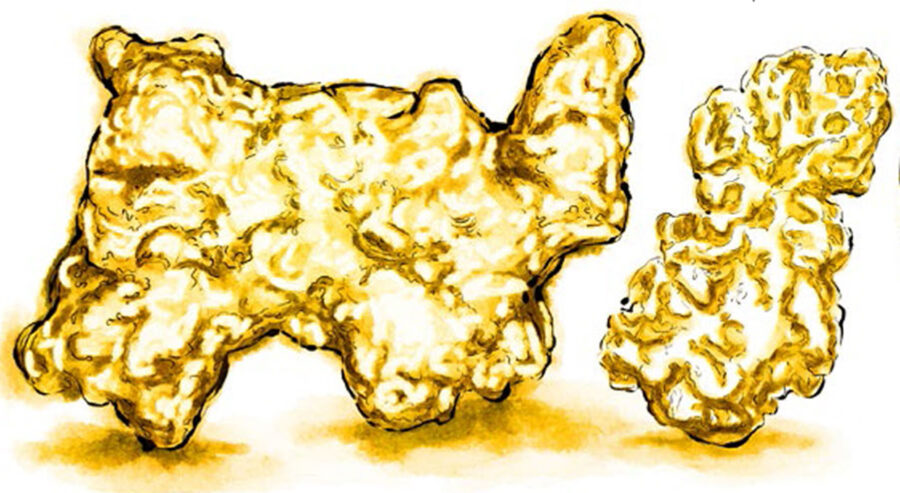One in a bullion: 150 years since the chance discovery of the Holtermann Nugget

It was found in 1872 at the Star of Hope Gold Mine, Hill End, New South Wales.
Although dubbed the Holtermann Nugget, the gold was not, in fact, a nugget. Weighing in at a whopping 285kg, it was a mixture of gold, quartz and slate. It stood 144.8cm high, and was 66cm wide and 10.2cm thick.
The 93.2kg of gold extracted from the specimen had an estimated value of $5.2 million at today’s prices.
As manager of the Star of Hope, German migrant and prospector Bernhardt Otto Holtermann was credited with the discovery. However, the object was uncovered when miners – who were more experienced than Holtermann – decided to go directly against his orders, which were to vertically extend the shaft.
Instead they sealed the shaft at 150ft and pushed westwards. The reef gold in which the ‘nugget’ was located was discovered when detonated explosives revealed a ‘wall of gold’.
The discovery of the Holtermann Nugget made headlines around the world, and Holtermann himself became one of the richest men in Australia at the time.
Hundreds of people viewed the gold specimen when it was briefly put on display, before it was crushed in a stamper battery and melted down.
With his newfound fortune, Holtermann built a palatial mansion in St Leonards, Sydney (now in North Sydney).
A replica of the Holtermann Nugget is housed in the Australian Museum in Sydney.



